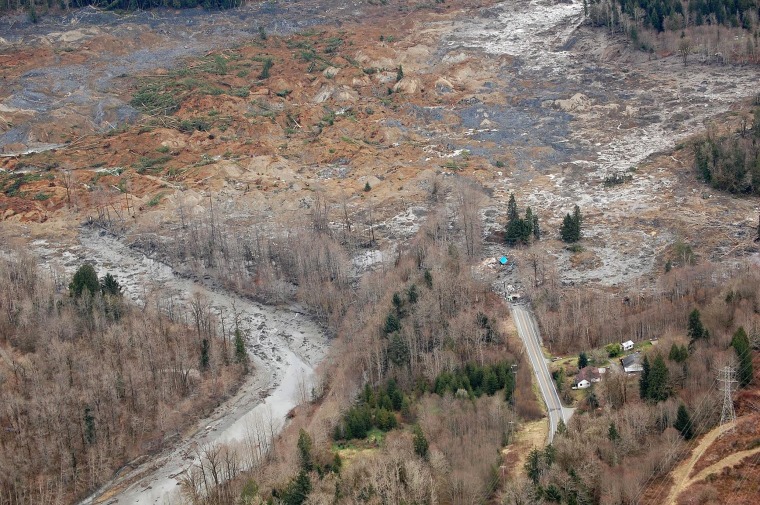While a landslide can theoretically occur anywhere there is elevated terrain, some areas of the nation are more prone to the phenomenon than others — like Washington state, where a mudslide destroyed a community and claimed at least 14 lives on Saturday.
More than 30,000 people worldwide were killed by landslides between 2004 and 2010, according to the Geological Society of America. And in the U.S. between 25 and 50 people are killed by landslides every year, according to the according to the U.S. Geological Survey (USGS).
Slides can occur in all 50 states, but regions like the Appalachian Mountains, the Rocky Mountains and the Pacific Coastal Ranges have “severe landslide problems,” according to the USGS.
The agency lists California, Oregon, Washington, Alaska and Hawaii as especially prone.
“Landslides come in quite a few different flavors,” according to Peter Lyttle, Vice President of International Consortium on Landslides at the USGS.
They can be slow or fast-moving and can be made up of various forms of debris, ranging from large rocks to muddy soil, Lyttle said.
But the types of landslides that present the greatest risk to human life are the flash mudslides like the one this past weekend — sudden deluges of heavy wet dirt that happen without warning, explained Ermel Quevedo, principal engineer and former CEO of Landslide Technology, an Oregon-based firm that specializes in "complex landslide and rockfall evaluations and remediation."
“Mother Nature can be pretty treacherous sometimes, and it’s pretty hard to fight that.”
Mudslides are caused by excessive rainfall and steep terrain, Quevedo said. “The water puts so much pressure that the dirt starts slipping,” he said.
Slides can also be the result of human interference, like road construction or ground breaches near a ledge to build a house with “a beautiful view,” Quevedo said.
Officials in Washington said Saturday’s slide was caused by an oversaturated ground, and conditions were exacerbated by fickle land that was the exact location of a mudslide in 2006. Snohomish County rainfall accumulations have broken records for the month of March, Washington State Patrol Trooper Mark Francis said Saturday.
Mudslides rarely come with a warning but Quevedo said people who live in coastal, mountainous areas should watch out for signs like curved trees and cracks in the ground or the foundation of their homes and report them to authorities immediately.
Unfortunately, unlike a tornado or an earthquake, people can’t stock the basement with canned goods and expect to ride out a mudslide.
In the event of a mudslide, “all I can say is run — just get out of the way,” Quevedo said. People who try to escape to the basement or cellar will likely get buried, he added.
In Washington, the mud was 15 feet deep after the slide, according to the Snohomish County government, making rescue operations on the ground impossible for nearly a day.
Another challenge that search and rescue teams faced in Snohomish was a river that had been dammed by debris and was at risk of overflowing at any moment. On Monday, Snohomish County was still under a flash flood warning, according to the National Weather Service.
In the event of a mudslide “all I can say is run — just get out of the way.”
The force of a blocked river can also turn a hill into a vertical drop and erode the land underneath a house, Quevedo said.
People who live in an area that recently experienced a mudslide should evacuate their homes if they live near a body of water or if they see cracks in the ground, Quevedo said.
John Pennington, director of the Snohomish County Department of Emergency Management warned residents on Sunday: “We really have two disaster operations going, one that has occurred and ... another that most likely can occur — a disaster inside a disaster.”
